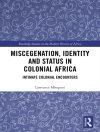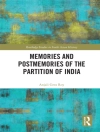Genocide is a matter of law. It is also a matter of history. Engaging some of the most disturbing responses to the Armenian genocide, Marc Nichanian strikingly reveals the complex role played by law and history in making this and other genocides endure as contentious events.
Nichanian’s book argues that both law and history fail to contend with the very nature of events for which there is no archive (no documents, no witnesses). Both history and law fail to address the modern reality that events can beand are now beingperpetrated that depend upon the destruction of the archive, turning monstrous deeds into nonevents. Genocide, this book makes us see, is in one sense the destruction of the archive. It relies on the historiographic perversion.
สารบัญ
Introduction: The Names and the Archive
1. The Law and the Fact: The 1994 Campaign
2. Between Amputation and Imputation
3. Refutation
4. Testimony: From Document to Monument
Conclusion: Shame and Testimony
Against History, by Gil Anidjar
Notes
Index
เกี่ยวกับผู้แต่ง
Marc Nichanian is a philosopher and literary critic who has taught in the United States, France, Italy, Turkey, and Armenia. He is the author of a history of the Armenian language and of a multivolume study of modern Armenian literature entitled Entre l’art et le témoignage, volume 1 of which, Writers of Disaster (The National Revolution) appeared in English in 2002. He is also the editor of Gam: A Journal of Analysis (written in Armenian). Six volumes were published between 1980 and 2005. Gil Anidjar teaches in the Department of Middle East and Asian Languages and Cultures and in the Department of Religion at Columbia University.












